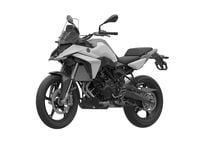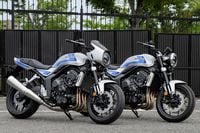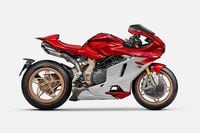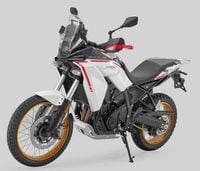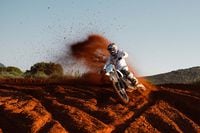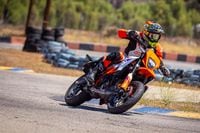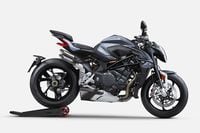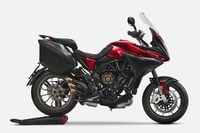Do rubber-soled shoes actually insulate the wearer from electric shock? That question crossed my mind as Energica Motor Company CEO Livia Cevolini introduced herself sporting ruby-red Air Jordans.
Cevolini is used to raising eyebrows, so her choice of footwear likely had little to do with the high-voltage signs posted inside the electric motorcycle manufacturer’s headquarters in Modena, Italy, and more with the fact that the high-top sneakers complemented her brightly colored belt.
“Managing our high voltage is a lot of work from a safety point of view,” Cevolini began, gesturing toward the fenced-off area at the far end of the plant. “We decided to go for high voltage at the beginning to be able to have fast charging and more performance with less energy and more efficiency. We are one of the few companies worldwide completely managing—100 percent—assembly of batteries in-house. This is our unique know-how.”
All three models—the faired $22,565 Ego, as well as the $21,656 Eva 107 and $20,930 Eva EsseEsse9 naked bikes—are compatible with the company’s Combined Charging System (CCS) single-phase AC (120-volt household outlet), three-phase AC (240-volt commercial; home installation available), and DC high-speed (fast charging; more efficient but less common) choices.
Energica claims that, using the DC option via the underseat plug-in, its battery pack can reach 85 percent of maximum state of charge within 20 minutes—”A coffee break,” Chief Technical Officer Giampiero Testoni remarked. Harley-Davidson, Lightning, and Zero likewise claim “Level 3″ DC Fast Charge capability for their recently announced or coming-soon machines, though reported charging times aren’t as quick as those of Energica.
Energica’s lineup shares a synchronous, oil-cooled, permanent-magnet motor (PMAC) for forward and, with the touch of a button, backward travel; maximum speed in reverse is 1.74 mph. The latter mode is intended to ease exodus from parking spots that might otherwise be a challenge, especially for shorter riders straddling what in Ego trim is claimed to weigh nearly 570 pounds.
A patented vehicle control unit sits atop the Li-NMC battery pack, which is centrally housed in a weathertight, two-piece aluminum casting that serves as a stressed member of the steel tube chassis. Engineers have thus far written 1.1 million lines of code, 645K for the VCU alone.
Lithium Nickel Manganese Cobalt Oxide (LiNiMnCoO2) is a common choice for this type of application for its excellent all-round performance, energy density, and safety; the chemistry isn’t pushed in one direction while sacrificing other desirable features. According to Testoni, working temperature is 55 degrees Celsius.
Claimed peak output varies from 107kW (145 hp) and 148 pound-feet of torque for the Ego and Eva 107 to 80kW (109 hp) and 133 pound-feet for the Eva EsseEsse9.
In 2013 when I first met Cevolini, her older brother Franco (Energica chairman and creator of the Windform additive-manufacturing materials family), and Testoni, Energica was cooped up in tight quarters.
“It was small,” Cevolini admitted. “We had two rooms. I had desks along the corridors. It was very uncomfortable. We had to move here because the only way to go in line production was to have a proper place.”
The current offices are large enough that, should market demand call for it, manufacturing capacity can be increased from the 400 machines Energica claims it will produce this year to more than 12 times that number.
“We went public on the Milan stock exchange in January of 2016 and we signed the day after for the rental of this building,” Cevolini said. “It was an incredible race because it was almost empty. They were making clothes—beautiful clothes but clothes. They had no data cables. We now have 2,000 meters of cables.”
Energica is part of the CRP (Cevolini Rapid Prototyping) Group, which includes CRP Meccanica, CRP Technology, CRP USA, and Windform. CRP grew from Roberto Cevolini & Company, the machine shop founded nearly 50 years ago by Franco and Livia’s grandfather and father.
Among the company’s historical footnotes: “In 2000, in association with Team Minardi on the Minardi M02, the company introduced the first Formula 1 gearbox manufactured by titanium rapid casting, a process later also adopted by other teams.”
CRP’s decision to expand beyond its core aerospace, defense, and F-1 clientele into the motorcycle segment stemmed from the economic downturn of 2008.
“We saw the crisis that was coming,” CFO Andrea Vezzani told me in ’13. “Our customers design the parts, and we produce those parts. We had orders for the next three months, but what do we do at four months? We had to make payroll. We had to pay suppliers. Even though we knew new orders would arrive every day, we felt that we were not the ‘owner of our home.’
“Since our vision is that CRP will become a bigger group than it is now, we wanted to establish another company but with its own products. We live in the ‘Motor Valley.’ Close to us are all these famous brands: Ferrari, Maserati, Lamborghini, and Ducati. Everyone wants to make something they like. We chose the superbike. Why electric? Because it is a challenge. We cannot fight against Ducati, so we needed to invent something else.”
Today, Energica refers to itself as “the first Italian manufacturer of high-performing electric motorcycles.”
Cevolini, who earned a mechanical-engineering degree from the University of Parma, says Energica wouldn’t be where it is today without CRP’s support. “A great part of this job came from the printing,” she noted.
Bodywork and other components for the prototype Ego I rode six years ago were printed in-house. And today, printed parts—headlight housing, seat pan, chain guide, motor housing cover, etc.—remain numerous.
“Because we have the availability of 3-D printing with the CRP technology,” Franco Cevolini said, “we can print in a very short time a physical three-dimensional part and then check it on the motorbike to see if it works or not.”
Leading a tour of CRP’s operation—which currently includes 15 five-axis and three four-axis mills—Cevolini paused to retrieve half of a raw casting for the suitcase-size battery box, the prototype for which was printed. CRP machines an assortment of aluminum components for the Ego and Eva models, including triple clamps, footpegs, and the VCU enclosure.
What it doesn’t manufacture, Energica attempts to source in country. “Eighty-five percent of the parts we are using on our bikes are coming from Italy and around this area,” Cevolini said. “We have a lot of famous and important suppliers for the brakes, electronics, suspension, wheels, and tires.”
Energica’s engineering team works in a second-floor office, a complete bike within reach. “This is a solution I’ve seen also in Formula 1 teams,” Cevolini explained. “Red Bull, for example, but others as well, inside the technical offices in the middle, places a real F-1 car because of the same reasons: The engineers and the technicians can touch and work on the car. With the three-dimensional CAD software, you can do a lot of things, but nothing is like having the possibility of touching and working on physical models.”
Much time in recent months has been spent preparing for the inaugural FIM MotoE Cup, for which Energica will provide 23 complete 120kW (160 hp) Ego Corsas for the 18 confirmed riders, plus spares. Italian energy giant Enel is the “100 percent renewable energy” supplier. Michelin sponsors the control tires (four front and five rear slicks per race weekend, plus three front and four rear rain tires).
“This was absolutely an opportunity that I couldn’t lose, and we fought a lot to get it,” Livia Cevolini said. “When we finally got the MotoE project, I was like, ‘We made this.’ We started from nothing—a sheet of white paper, almost no money. We are only 50 people, not 100 engineers, but we are the best in the world for electric motorcycles.
“We will have a three-year exclusive on the best riders racing our motorcycle in extreme conditions and testing all the technology that we will then introduce on street-legal motorcycles. We are the sponsors, so the teams don’t pay for the motorcycles. They just pay for spare parts if they crash. It was another big step for us.”
The MotoE Cup suffered a heavy setback in March when a fire swept through the temporary paddock at the Circuit of Jerez in southern Spain following the first of three days of scheduled testing. No one was injured, but all the bikes and parts were destroyed. The exact cause of the blaze has yet to be communicated.
Jerez was supposed to host the first of five rounds, all at tracks in Europe, on May 5. The revised six-race calendar will run in conjunction with four MotoGP weekends on the following dates:
- July 5–7—Sachsenring, Germany
- August 9–11—Spielberg, Austria
- September 13–15—Misano, San Marino
- November 15–17—Valencia, Spain
Energica is simultaneously working on other projects, like its “Smart Ride” collaboration with Samsung Italy. Based on the Eva EsseEsse9, the futuristic Bolid-E prototype incorporates smartphone-integrated “intelligent” mirrors with head-up displays. Front- and rear-facing cameras scan the road, analyze images in real time, and warn the rider of potential hazards.
With a Bluetooth-connected watch, the rider can create a virtual key and start the bike simply by positioning the watch near the VCU cover. Other digital possibilities: set destinations, record trips, review power consumption, and other performance data, as well as identify charging stations by type. Remotely, the owner can check battery level, find the bike on a map, and even sound the horn.
“When you do a project like this, you have so much technology,” Cevolini said. “You continually think of other applications. When you have a petrol engine, you don’t have other things you can put inside the engine to make it work. You just put petrol. Here, you need energy. And energy can be produced in many ways, including renewable energy. We are pushing so hard to go this way.
“Of course, there are costs. And it’s difficult for us because we are small. But it’s much more interesting and fun. You really can create a world around the motorcycle, not only to have fun when you are riding but to enjoy the experience when you are home.
“We didn’t want to do everything by ourselves; we’re not crazy,” Cevolini concluded. “But there was absolutely nobody able to do this job, so we were forced to learn by ourselves. Now that we have this experience, it’s a unique way to compete in the market.”










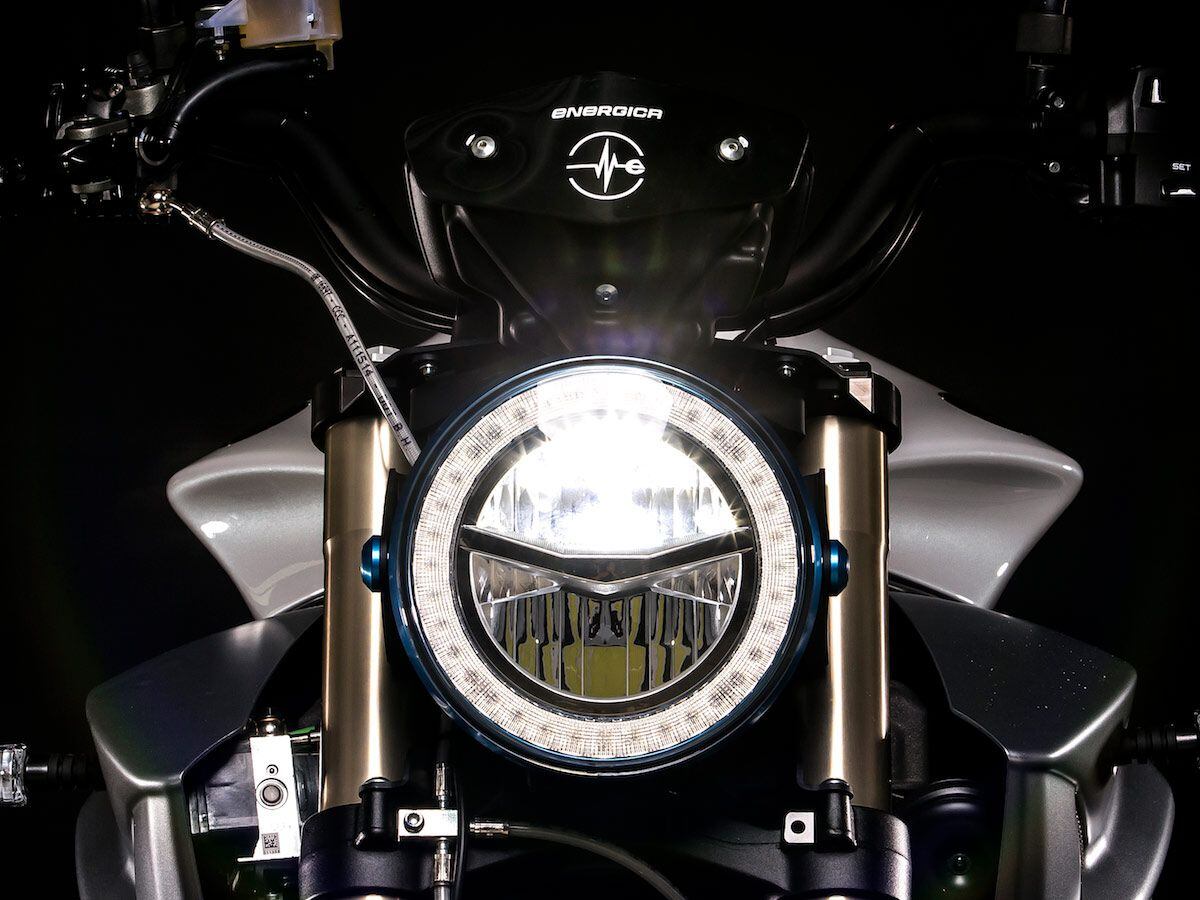
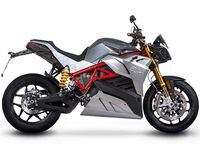
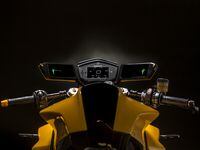
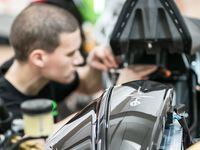
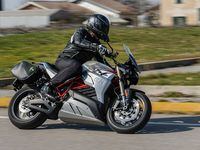
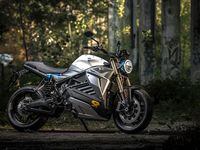
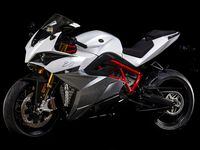

/cloudfront-us-east-1.images.arcpublishing.com/octane/6JPU4U2H7GOYZH2ZETYQBFLR2Q.jpg)
/cloudfront-us-east-1.images.arcpublishing.com/octane/CXNPUJDPPBCVHIRI5H7UOCX5HY.jpg)
/cloudfront-us-east-1.images.arcpublishing.com/octane/RZ5QNVGN4ZDRHJIKTPHGDX3HKA.jpg)
/cloudfront-us-east-1.images.arcpublishing.com/octane/ZGBASNGFXVBGXAQGDM6EWLNFXA.jpg)
/cloudfront-us-east-1.images.arcpublishing.com/octane/54BEFUE3XBDCTCAYUYQNZGAJV4.jpg)
/cloudfront-us-east-1.images.arcpublishing.com/octane/5XF2ZKSOR5G7TO23KSYT4JADTU.jpg)
/cloudfront-us-east-1.images.arcpublishing.com/octane/VHUK3FH6WFHLTHN7CKCATU36LM.jpg)
/cloudfront-us-east-1.images.arcpublishing.com/octane/HC4P3CYOXFF3NGXCQTGORFRYNY.jpg)
/cloudfront-us-east-1.images.arcpublishing.com/octane/ZNANUJGGKVBIFH3VRZ32BYC454.jpg)
/cloudfront-us-east-1.images.arcpublishing.com/octane/JACAJ4MPKJBTDBOZRTHXZAKLTA.jpg)
/cloudfront-us-east-1.images.arcpublishing.com/octane/7L3YWQXRBRECXMWQ6NBVAHU2EY.jpg)
/cloudfront-us-east-1.images.arcpublishing.com/octane/BPD5CKH5IFGDLG67Y24UMOXXGA.jpg)
/cloudfront-us-east-1.images.arcpublishing.com/octane/CHQ32B6TVBEPVFNPERY3AB2H3M.jpg)
